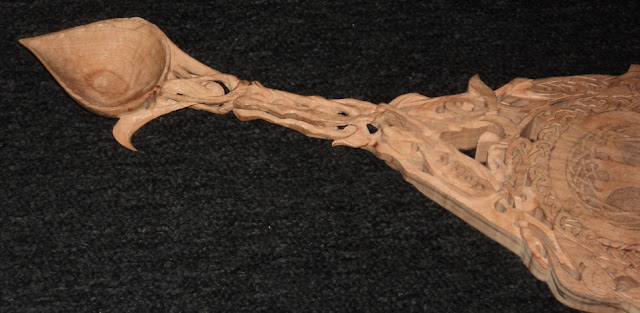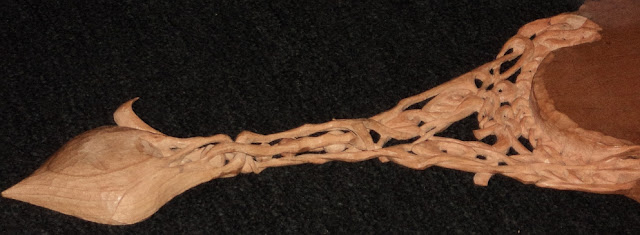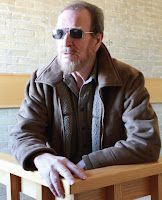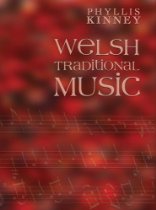Blogs
Burry Port Town Band have launched their 40th Anniversary photograph search.
The Band's Chairman Graham Howe thought that it would be a "fantastic idea to see if people in the area might have old pictures of the band which we could then put into an exhibition celebrating the 40 years of Burry Port Town Band."
Photographs can be either dropped off at the Saith Gallery, Burry Port which is open from 1pm to 7pm Mondays, 11am to 7pm Tuesday to Saturday and from 11am to 4pm on Sundays for the attention of the band, or emailed tophotos@burryporttownband.co.uk, or if you're on Facebook, they can be added to the band's Facebook page.
Graham added: "We're really looking forward to seeing the pictures people might have taken over the last 40 years and thanks to Roz Moreton of the Saith Gallery for helping us with this project."
The Jenkins Bakery has lent its support to Llanelli Squash Club.
The club fielded five teams in the South Wales and West Glamorgan leagues during last season.
Overall, the season was very successful, with the club benefiting from developing younger players and bringing them into the team.
A club spokesman said: We are very grateful to the Jenkins Bakery, who sponsored kit for all five teams.
The first team played in South Wales premier B division and benefitted from the return of Andrew Neale to the club. Andrew played at No1 string and was unbeaten during the season.
The emergence of Sam Weeds helped keep the team towards the top of the league however the team missed out on promotion to Premier A by one point. The team will be looking to get promotion to the top division in the first half of next season.
The B team had a solid season with Mark Davies and Jeremy Rowlands performing admirably at the top of the order and Sam Weeds again gaining some vital wins. Mark Richards was team player of the year benefitting from his many years experience. Hopefully, Liam Stafford will return to fitness next season and with a full team promotion should be attainable next season.
The C and D teams finished mid table in their respective divisions with Dafydd Parkman showing his potential for the future with good performances. The E team again gave younger players the opportunity to represent the club. Rhys Westcott captained the team and gained some good wins and the Parkman twins showing that the future is looking bright.
Russell Jenkins, the operations director at the Jenkins Bakery, said the firm was delighted to be able to support Llanelli Squash Club.
Pictured are members of the A and B teams along with Russell Jenkins, operations director of the Jenkins Bakery.
Completing carving of "part A" ( Portland Lovespoon - West Coast Eisteddfod )
By Ceri Shaw, 2012-08-13
Reproduced with kind permission from David Western's Portland Lovespoon Blog

Here, I was looking to check those vines coming up from the cages - even while I was carving the cages, I had to think about not only the depth level of those vines that were the cage, and following it up each of those vines, but also the overall profile of the spoon as it flattened out, and reached towards the top. I wanted to curve down the sides a little, to help with the transition of the thick cages to the flatness of the rest of the handle, but also keep the lower part of the handle a little nearer to the front plane than higher up. This goes back to that challenge of making the vines look and behave like vines. Vines wouldn't bend back and forth the way the ropes in knotwork do - they might bend around something, but it's a more gradual bend. So, trying to do that as much as possible, there was quite a lot of thought that went into any part that reached into or around another part. I think of the bends in knotwork as being completely flexible, because there's been human intervention, bending the ropes in a knot. Vines, on the other hand, grow into the path of least resistance - they don't usually choose a path that follows the perimeter around another object/vine (well, sometimes they do, and I included one of those in that heart in the middle, but that's a different thing). So that's what I was thinking, anyway... just in case you wondered.  I don't know how well I succeeded with carving the vines to look "natural," but at least that was the intent.
I don't know how well I succeeded with carving the vines to look "natural," but at least that was the intent.
Anyway - I was thinking the cages would have been the hardest part. I was wrong. I seriously under-estimated something. I have carved my share of fretwork before - even tight fretwork like this - but there were two key differences this time: 1) there was a LOT of it, in a relatively small space, and 2) it was mostly pretty irregular, not in repeating patterns. While there was no single element that seemed so unusual, having a whole bunch of detail all crammed into a relatively small area added a substantial challenge I had definitely overlooked. I actually felt the need to keep a print-out of the design with me while I was carving, just for reference.
However, the really hard part came along when I'd flip it to carve the back. I found it incredibly difficult to keep track of where I was, and keep the exact part I was carving in my mind's eye. I think it was the irregularity that made it so difficult, because once I marked out the over/unders on one of the little knots surrounding the tree, the rest weren't really any trouble. In hindsight, if I ever do something like this again, I'll simply draw out the back, too, so I have it for reference. Why I didn't stop and do that this time - I couldn't tell you. But had I done it, that probably would have spared me many hours of staring and thinking.  The fretwork was so tight, I couldn't see the over-under of the other side from the back, so I had to think it through from the front-side print-out I had. This was even after I'd scooped away as much of the excess depth as I was comfortable removing. I guess I usually have quite a lot more open space involved in my fretwork. I thought that was just my design sense, but now I see there was an added benefit I didn't even realize before!
The fretwork was so tight, I couldn't see the over-under of the other side from the back, so I had to think it through from the front-side print-out I had. This was even after I'd scooped away as much of the excess depth as I was comfortable removing. I guess I usually have quite a lot more open space involved in my fretwork. I thought that was just my design sense, but now I see there was an added benefit I didn't even realize before!
I think the irregularity was the worst part. At least in those knots surrounding the medallion, once I found my way around one, from the back, all the others fit together the same way. In hindsight, I'd have spared myself from a lot of confusion on the back if I'd just stopped and drawn out the back on a piece of paper, so I could have it as reference, just like I had the front drawing as reference. I should have stopped to do that, but I suppose I couldn't see the forest, for the trees! I know for next time, though. 
Oh, and I held off on carving that leaf sticking off the side there, higher-up on the handle, so that I wouldn't break it off while I was carving up there. I'd carved the leaves sticking out near the bowl, but I'd already gotten used to keeping them safe, so they were pretty much out of the way now.
The plan was that I'd carve probably up to somewhere around the tips of the tongue and tail, and I'd probably get into the knots that the other parts of my carving would touch on the lower part of the medallion. As I was carving away the back, I realized that those vines that reach most of the length of the spoon (into Dave's section) could end up at a variety of depths, depending on what Dave wanted to do. So, near where those met Dave's section, I didn't completely carve them, so I could leave him some flexibility in his placement of those.
In the same way, I wanted to carve some of those little knots next to the medallion, since the other stuff I was carving next to them touched them, and they sort of inter-acted. Also, the part where the words will be seemed like a good stopping point, since I could keep the back flat pretty much where Dave will be sawing, too, and its shape is relatively straightforward.
So, eventually, I decided enough was enough, and it was time to move on to sanding! I inevitably find little pieces that I think need to be thinner, or corners that need to be sharper, etc., when I'm sanding, so there'll be a little more carving (even though that's bad for my tools) while I'm sanding. But, for the most part, here it is, finally - "carving part a" complete. Yay!
Well, that took - oh... about 3x as long as I expected. Hmm. So much for getting better at estimating! Ahh, the dangers of lack of experience...... Sorry, Dave! One day, you'll get your chance at it!!!
Next - SANDING!
Janet Mancini - Alberta Mancini's Recipes - Beef and Tater Casserole
By Janet Louise Mancini, 2012-08-13
Beef and Tater Casserole
Bake at 350 degrees in a 18 x 9 inch Casserole dish.
1 1/2 pound Beef or Turkey
1/2 cup chopped Onion
1 can Chicken Rice soup
1 can Chicken Gumbo soup
1 can Mushroom soup
1 - 16 oz package mixed frozen vegetables thawed
2 lb bag Tater Tots
Brown ground meat and onions, drain. Mix soups together and bring to a boil, sprinkle vegetables over meat in the casserole dish. Pour hot soup over mixture. Place Tater Tots on top. Bake in a oven until center is bubbly 15 - 20 minutes. 7 servings.
Tuna and Noodle Casserole
4 ounces (1/2 package regular noodles)
2 cups milk
1 package Lipton Mushroom Soup Mix
1 - 7 ounce can tuna, drained
1/8 teaspoon black pepper
1/2 cup bread crumbs
2 tablespoons butter or margarine
Cook noodles according to package directions, drain. In saucepan stir milk in to mushroom soup mix. Heat and stir until thickened and smooth but do not boil. Combine noodles, mushroom soup, tuna and pepper. Pour into 1 1/2 quart casserole dish. Top with butter or margarine. Bake in a moderate oven 350 degrees for 30 minutes or until heated and browned. Garnish with parsley. Makes 4 - 6 servings.
 Faced with a blank sheet of paper or an empty page on Word what do we do for help? Why not pause and look around,inspiration may be closer than you think. For example, the local church yard is not always the dead end we take it to be!
Faced with a blank sheet of paper or an empty page on Word what do we do for help? Why not pause and look around,inspiration may be closer than you think. For example, the local church yard is not always the dead end we take it to be! Manyyears ago I took a class of children on a visit to a local church yard. We were a poor school and couldn't afford trips to leisure parks!
Children took rubbings of old headstones and we learnt much about our past from what was inscribed upon them. One headstone in particular caught our eye.
John Williams (Formerly of Cowbridge)
Born 1815
Served 24 years in the Regiment of Life Guards
Accidentally killed in Rhondda Valley Railway
15th Feb 1865
Aged 50 years
1815 immediately evoked images of the Battle of Waterloo where amid the bloody chaos of battle Napoleon's dreams of Empire were finally shattered. It was as he surveyed the carnage of the aftermath that Wellington uttered those famously desolate words:
"The only thing worse than a battle lost is a battle won."
We decided we wanted to find out more about John Williams soI wrote to the headquarters of the Life Guards and forwarded the officer in charge his details. They duly responded and John began to emerge from the shadows.
"Joined Ist Regiment of Life Guards 23rd January 1839. Alloted Regtl. No. 680(1st series)
On enlistment he stated he was 23 years and 4 months old. Born at Cowbridge in Glamorgan.
Height 6' 3", fair complexion, grey eyes, brown hair - was trained as a clerk. . .
21st January 1848 married Susan Howard at Trinity Church Marlebone, London, but we have no record of the birth of any children during service with the regiment.
Did not serve overseas - discharged in the rank of private at his own request with a character assessment of very good on 8th April 1863 and received a pension for life of 1s 1d per day.
Would have been stationed with the Regiment in either London or Windsor. At the time the 1st Life Guards, 2nd Life Guards and Royal Horse Guards served at Cavalry Barracks, Windsor, Hyde Park Barracks, and Regent Park Barracks, London. The three regiments changed stations between these three Barracks each year."
Questions now began to flood our minds:
"Why did John move from rural South Wales to London? Had he heard stories from the drovers of a city paved with gold? What did John make of Victorian Londonwith itsfilth and squalor? What was it like serving in the Life Guards? How did he meet Susan Howard? Why did he leave the army and return home? What exactly happened to cause his death on the Rhondda Valley railway in 1865? Why is there no mention of any relative on his gravestone?
Questions lead to speculation and research. Did John leave the army because Mary had died? Had sheleft him for someone else? Why did he make his way to the Rhondda instead ofCowbridge? Speculation and research evolves into story.
We undertook a considerable amount of research and with funding from the Gulbenkian Foundation actually made a film approximately thirty minutes long filmed in various locations including the Welsh Folk Museum at St Fagan's.
The London that Charles Dickens brought so vividly to life wasthe London John inhabited. Public hangings took place throughout John's period of service. The last public hanging was on 26 May, 1868,outside Newgate prison, five years after John's discharge. The hangman's victim was Michael Barrett, the Fenian convicted of bombing Clerkenwell Prison, central London. A law banning the hanging of children under the age of sixteen was not passed until 1908. Could John have witnessed one of these events or even been assigned to help control the crowds?
Headlines that might have featured in the London press during the twenty four years John spent in London included:
"British Army Massacred On The Road From Kabul! The Worst Disaster In British Military History."
"Welsh Robin Hood Sentenced To Transportation. Rebbecca Rioters Caught At Last."
"Potato Famine Sweeps Ireland. Thousands Dead."
"Gold Found In California. Gold Fever Sweeps America."
"Great Exhibition Opens At Crystal Palace. The Eighth Wonder Of The World."
"Livingstone Discovers Great River In The Heart Of The Dark Continent."
"Crimea Sensation. Gallant Light Brigade Charge Russian Cannon."
"Florence Nightingale Takes Nurses To Crimea."
This is the London John left behind in the Spring of 1863. The Wales he returned to was a far different place. The Rhondda Valleys, once described as 'the gem of Glamorganshire', were being transformed into industrial communities almost overnight on a scale that rivalled events in the Klondike. Men desperate for workstreamed to the Rhondda from all over the United Kingdom and Ireland submerging this once rural community in a rising tide of humanity. John became one of them.
As an ex soldier he would not necessarily have been welcomed with open arms. Certainly not by any Irish with nationalist leanings or by many of his countrymen who had faced transportation and, in the case of the Chartists, death at the hands of the military. While his death is declared to be an accident we can always speculate that it might well have been worth further investigation given the prevailing mood of the time.
Quite an interesting journey from a visit to a local churchyard - I've already started on the novel!. The next time you feel in need of inspiration why not get up stretch your legs and go for a walk. We are surrounded by stories if only we would take time to 'stand and stare'.
* * * *
This weeks featured ebook is The Quigley Rescue
For Danny Quigley and his buddy Scotty McGregor, missing a flight was the start of a journey into hell. Thus starts the third novel, a trilogy, The Quigley Rescue. The action is gritty and unrelenting as the SAS Special Forces duo, embark on a NATO mission to rescue an American major and two importantAfghan officials. It culminates in a fierce fire-fight, when the alarm goes off at a pivotal moment and theSpecial Forces team are forced back up into the mountains, chased by hundreds of vengeful Talibanand Al Qaeda terrorists.
Even after Danny becomes a civilian, the nail-biting action never lets up when he receives a mysterious message from an old friend, long believed dead. He journeys into the deep woods of British Columbiain Canada, with a select group, to find him, and there discovers a threat against the U.S. that would make 9/11 look like a picnic."
About the author:
Russ McDevitt is no stranger to action. Born in Ireland, he has travelled the world; working on the railroad, and a logging town in Canada before heading down to Hawaii, Fiji, then New Zealand where he worked for 6 months on the docks. He later moved to Australia where he travelled with a boxing and wrestling troupe for nearly 3 years, taking on all comers. Returning to Canada, he joined the Forces as a military policeman, and served with the NATO brigade in Europe.
Latterly he enjoyed a successful career in the life insurance industry in Ireland and the UK, and earned a reputation as an industry writer, coach and motivational speaker, winning the Irish and British toastmasters awards. He has appeared on Irish and Canadian TV, now lives in Canada with his wife Marie and has 6 children.
More books by Russ:
Next week I'll be featuring some of my Twitter Followers and their books and asking "Do You Have Pontius Pilate Syndrome?"
P.S. I would love to feature more Welsh authors on my blog http://kindleauthors.blogspot.com I am delighted to say that Jean Mead will be featured in the very near future.
Hi, i'd like to tell you about my 17 year old son Ioan who has been chosen to go with the Urdd charity to Patagonia in October to help underprivileged Welsh-speaking children. He's a hard worker and achieved remarkable results in his GCSE's gaining 10 A' stars and 3 A's at Welsh medium school in Barry although we, his parents, are non Welsh speakers from Cardiff. He doesn't know what to study in Uni' and me and my wife are at a loss to advise him as we did not attend Uni' ourselves.
He has to raise 2100 to travel to S America and is about halfway there. He sent letters to the top 30 most profitable Welsh Companies and got no sponsorship support. He has put adverts in shop windows offering his services such as dog-walking, babysitting, odd jobs, etc but money is scarce I suppose; we've raised a lot from Quiz nights, and school functions We have also written to local Councils but no backing from them yet either. If anyone out there in the USA feels that they can help in some small way to help him reach his goal he would be most appreciative. He is working this week at the Eisteddfod and will continue to work hard to raise the amount required.
Regards, Chris Williams
CHRIS CHANDLER AT THE WEST COAST EISTEDDFOD
MULTNOMAH ARTS CENTER OCT 13th
Chris Chandler the winner of the West Coast Eisteddfod 2011 live poetry and short story telling competitions will be appearing live at the 2012 West Coast Eisteddfod in Portland on Oct 13th at the Multnomah Arts Center.
This will be an incredible show!
The Flying Poetry Circus and Modern Multimedia Medicine Show
High Flying-Storytelling-Acro-balancing-Blues-Americana-Short Films-Juggling-Hula Hooping-Burlesque-Poetry-Politics-Conscious-Contortionists-So-Politically-Correct-it-feels-comfortable-being-wholly-and-utterly-incorrect. YES!
My friends Kazum! and I have wanted to do a show together for sometime and finally the date is upon us! It will be me and Paul doing our irreverent iconoclastic multimedia show with the terrific highflying acro-balancing troupe Kazum! We will also have several special guest culminating in an old school tent revival vaudeville hoe-down!.... MORE.
This iframe is not allowed
PLAY LIST
The list below is not arranged in the order that tracks are played in the video but has been posted as a quick reference guide to anyone who wants further information about a particular song or artist. I may add more....but then it wouldn't be a Top Ten 
Carreg Lafar - Glan Mor Heli
John Good ( Tramor ) - Ar Lan Y Mor
John Good ( Tramor ) - Morfa Rhuddlan
Suo Gan - from Empire of The Sun
Moch Pryderi - Gwenno Penygelli
Treorchy Male Voice Choir - Myfanwy
Angharad Gabriel - Dafydd Y Garreg Wen
Catrin Finch & Cimarron - Ar Ben Waun Tredegar
 Here are some links to other Welsh traditional songs currently listed with individual entries on the Wikipedia. Not exactly an exhaustive list but includes references to a number of songs not included in the above Playlist.
Here are some links to other Welsh traditional songs currently listed with individual entries on the Wikipedia. Not exactly an exhaustive list but includes references to a number of songs not included in the above Playlist.
ABC | C cont.DGL | MSWY |
| | Available from the Welsh American Bookstore |
Stromboli
1 loaf frozen bread dough
1 egg yoke beaten - Parmesan cheese
1/4 lb. Provolone Cheese - sliced
1/4 lb thinly sliced baked ham
1/4 lb thinly sliced pepperoni
1/4 lb thinly sliced capicola ham
1/4 lb mozzarella cheese - grated
1 egg white
Follow package directions on bread dough up to the baking. Roll into a 15 X 8 inch rectangle. Add enough parmesan cheese to egg yoke to make a spreading consistency. Spread on dough. Layer Provolone ham, pepperoni, capicolla and mozzarella. Carefully fold dough over and pinch closed all the way around. Brush with egg white. Bake on cookie sheet in 350 degree oven for 30 - 35 minutes. Makes 4 servings.















